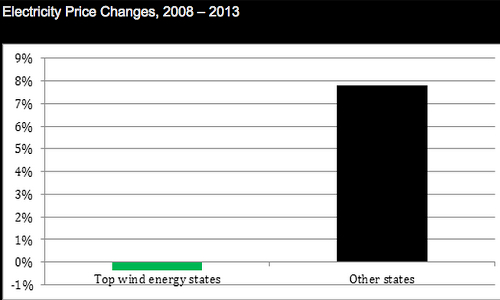Nuclear Power
The Nuclear Energy Institute is still whining that since nuclear power can’t compete in the marketplace, it should get special treatment. As we predicted last week (Nuclear Newsreel, February 12, 2014), NEI CEO Marvin Fertel’s pitch to Wall Street focused heavily on the notion that the “current competitive market that power producers bid into doesn’t adequately value the reliability the industry’s plants provide.” What he means by that–and what is on top of the nuclear industry’s agenda for 2014–is that to avoid more reactor shutdowns this year and in coming years, regulators will have to force consumers to pay higher prices for electricity just because the electricity is generated from nuclear reactors. Why? There really is no rational reason why, but Fertel and the industry argue that it’s because nuclear provides “baseload” power, which readers of GreenWorld, at least, know by now is an increasingly obsolete construct. And it doesn’t even work on its own terms, since nuclear’s current primary competitor–natural gas–can also provide “baseload” power.
But the argument isn’t even effective against intermittent renewables like wind and solar since distributed generation and a smart grid are able to adjust to their intermittency and use their power as it is available and needed–and at a lower cost than nuclear.
The industry is clearly pining for the good old days of electricity markets regulated by Public Service Commissions the industry controlled. NEI spokesman Steve Kerekes admits as much: “In states where the marketplace is more regulated and utility regulators guarantee the rate of return energy companies receive for building and operating new plants, there is investment in new nuclear reactors, Kerekes said.”
It’s not yet clear exactly how the industry would be able to rig electricity markets so that power from nuclear reactors would receive preferential treatment–after all, a primary foundation of the deregulated marketplace is remove such authority from regulators and avoid such price-rigging. But since the nuclear industry will be focusing on this issue, it will be important for clean energy advocates to stay on top of their activities.
34 clean energy groups, including NIRS, submit petition to NRC to suspend all licensing activity until fuel pool fire risk addressed. Link is to press release (pdf) and full petition can be found on NIRS’ website here.
Nuclear power can’t save climate, reason 1212: Researchers say climate-induced water shortages could disrupt Britain’s electricity supply in coming decades. And nuclear power–even using seawater–won’t help. Wind power will, according to this upcoming study reported by The Guardian.
As if on cue (Nuclear Newsreel, February 12, 2014), First Energy has begun replacing steam generators at Davis-Besse reactor, and the problems already have begun: a 6-12 inch wide “gap” in concrete containment wall found.

Clean Energy
Globally, fossil fuel subsidies are hampering the shift toward renewables. Governments worldwide spend nearly $2 Trillion per year propping up the various fossil fuels, and only about $88 billion/year supporting renewables. That imbalance is slowing the implementation of renewables. Add in nuclear subsidies, which, in the U.S. at least traditionally has been the most subsidized energy industry, and it’s almost amazing that renewables are growing as fast as they are. That says a lot about renewables’ advantages. Of course, when externalities are factored in, renewables are the cheapest source of energy just about everywhere.
As is often the case, Denmark is leading the way on addressing climate change and ignoring the fossil fuel/nuclear lobbies. A bill is expected to pass Parliament soon that will require the country to reduce carbon emissions by 40% by 2020–well ahead of European Union and U.S. targets, and Denmark is continuing its commitment to be 100% carbon-free by 2050. And they are doing it without nuclear power.

Renewable energy costs are falling in Michigan. Probably in your state too. In Michigan, wind is the driving factor in reduced electricity costs. But solar power, especially rooftop, will continue the dramatic cost reductions of the past couple of years, according to this article. Indeed, the cost decline may well accelerate. That’s good news for consumers–meaning all of us.
Inside Washington
Confidential DOE study finds that completing MOX (plutonium fuel) plant could cost another $30 Billion on top of the $4 Billion already spent. The Obama administration has been trying to end this unnecessary and dangerous project, but South Carolina legislators, especially Sen. Lindsay Graham (R-SC) have been lobbying hard for the pork-barrel dollars. This study will provide the administration with new ammunition to try to convince Congress to finally stop the funding flow.
Michael Mariotte
Permalink: https://www.nirs.org/nuclear-newsreel-tuesday-february-18-2014/
Comments are welcome! Say your piece below. Start a discussion. Don’t be shy; this blog is for you.
Note: If you’d like to receive GreenWorld via e-mail daily, send your name and e-mail address to nirs@nirs.org and we’ll send you an invitation. Note that the invitation will come from a GreenWorld@wordpress.com address and not a nirs.org address, so watch for it.



